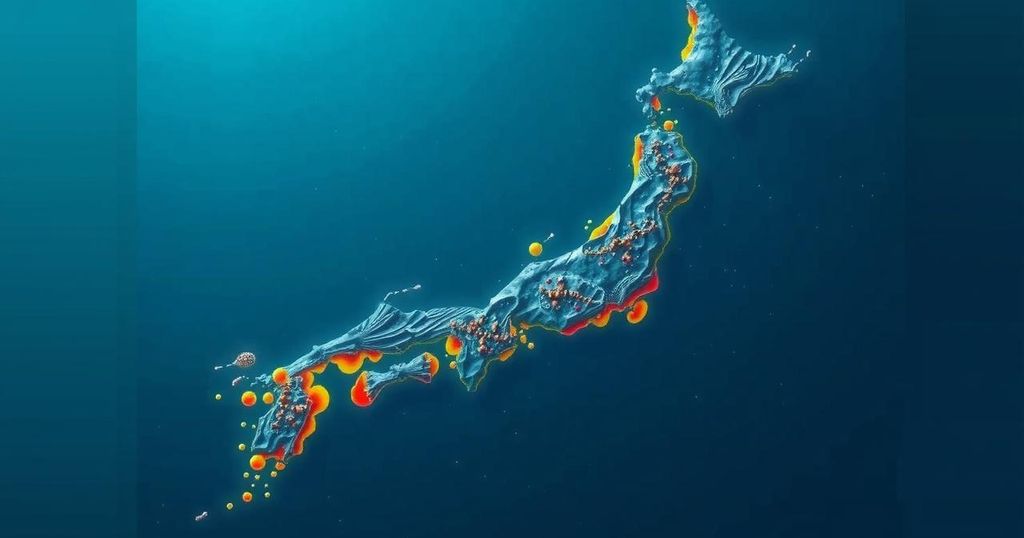On November 17, a 6.0 magnitude underwater earthquake struck off Japan’s northeastern coast, resulting in six aftershocks and expected sea level fluctuations along affected regions. The quake’s epicenter was located at a depth of 10 kilometers near Amami Oshima, and tremors were felt in Amami and Kagoshima cities.
An underwater earthquake with a magnitude of 6 occurred near Japan’s northeastern coast, specifically off Amami Oshima, at a depth of 10 kilometers. This seismic event, which transpired on November 17, elicited tremors felt across the cities of Amami and Kagoshima, with magnitudes in these areas ranging from 2 to 3. The episode also triggered six subsequent aftershocks in the following hours, with intensities between 2.4 and 6, indicating ongoing seismic activity. There are concerns that such seismic movements may lead to fluctuations in sea levels along the Tanegashima and Yakushima regions, as well as the Amami and Tokara islands, for approximately 2 to 3 hours following the earthquake.
Earthquakes are common along the coasts of Japan, which is situated in a seismically active region known as the Ring of Fire. The country experiences numerous tremors each year, making it essential for the Japan Meteorological Agency to monitor seismic activity continuously. This recent earthquake underscores the importance of preparedness and response strategies for populations residing in quake-prone areas. The aftershocks and potential sea level changes highlight the need for vigilance among local populations.
In summary, the magnitude 6 earthquake off Japan’s northeastern coast serves as a reminder of the region’s seismic volatility. The immediate aftershocks and expected sea level fluctuations necessitate caution and resilience amongst residents in affected areas. Continued monitoring and response efforts are critical to ensuring public safety in these regions.
Original Source: unn.ua






